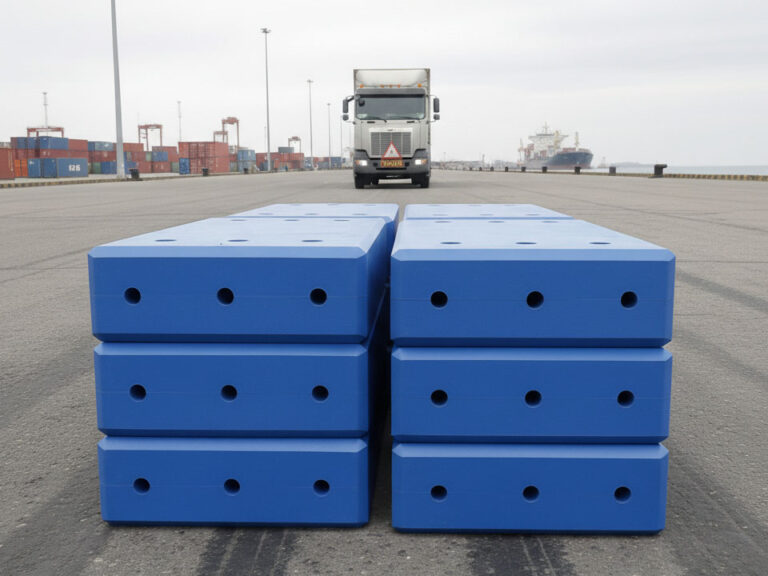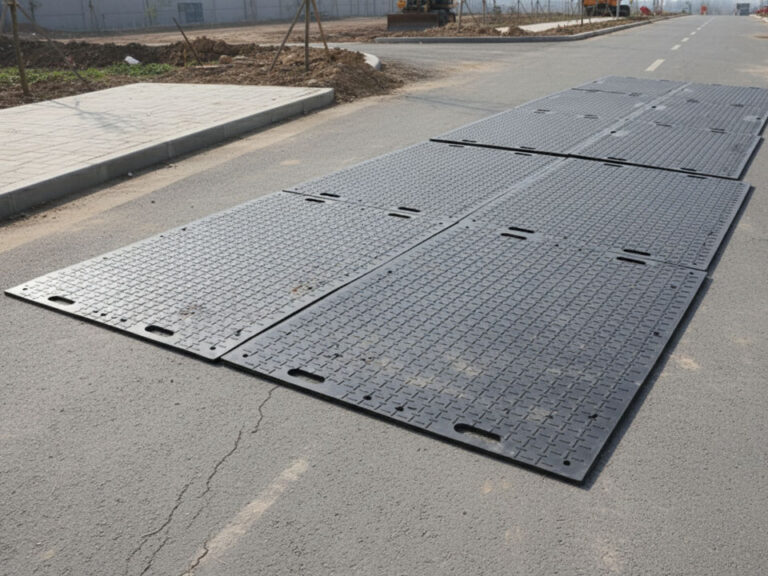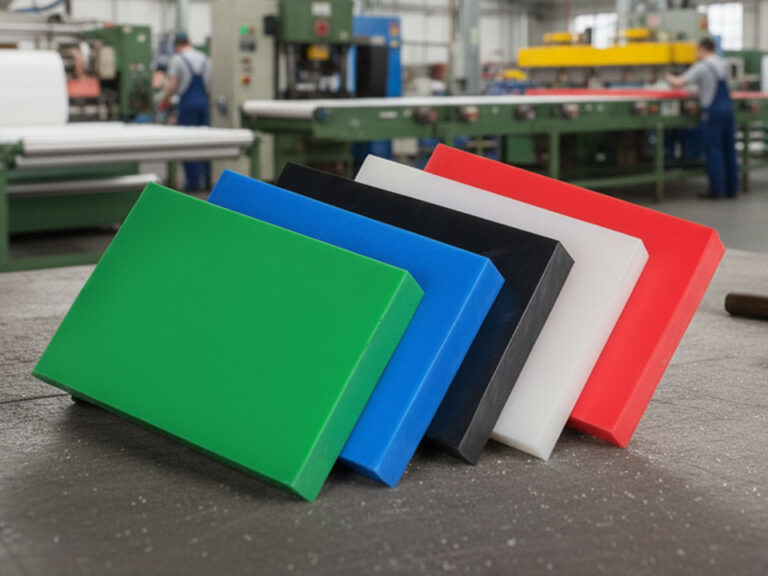-
Tian Dong Industrial Park, Decheng District Economic and Technological Development Zone, Dezhou City
Which is Right for Heavy-Duty Applications Between UHMWPE and HDPE
Summary
The comparison of Ultra-High Molecular Weight Polyethylene (UHMWPE) and High-Density Polyethylene (HDPE) in heavy-duty applications highlights their distinct properties and suitability for various industrial needs. UHMWPE, characterized by its exceptionally high molecular weight and unique molecular structure, offers superior impact resistance, abrasion resistance, and low friction properties, making it ideal for demanding environments such as mining, automotive, and aerospace sectors. In contrast, HDPE is known for its versatility, high tensile strength, and chemical resistance, which serve well in less demanding applications like piping systems and consumer goods.
Table of Contents
The notable distinction between these two materials lies in their mechanical properties and performance in extreme conditions. UHMWPE outperforms HDPE in applications requiring exceptional durability, such as wear-resistant linings and conveyor systems, whereas HDPE is favored for its cost-effectiveness and ease of fabrication in general-purpose items. The choice between these polymers ultimately depends on specific project requirements, including performance expectations and budget considerations.
Controversies surrounding these materials primarily focus on environmental impacts and recyclability. While UHMWPE is praised for its longevity and reduced maintenance needs, concerns about its end-of-life management persist, as it poses challenges in recycling processes. Meanwhile, HDPE, although more economical and easier to recycle, does not match the performance of UHMWPE in highly demanding situations, leading to ongoing debates about the balance between sustainability and performance in material selection.
This article delves into the properties, applications, and cost considerations of both UHMWPE and HDPE, offering insights into their respective advantages and limitations for heavy-duty applications.
Properties of UHMWPE
Ultra-high molecular weight polyethylene (UHMWPE) is distinguished by its unique molecular composition and outstanding physical and mechanical properties, making it an ideal choice for heavy-duty applications.
Molecular Composition and Structure
UHMWPE is a semicrystalline polymer characterized by extremely long polyethylene chains, with molecular weights ranging from 3.5 to 7.5 million atomic mass units (amu) and sometimes even higher. This structure results in a two-phase composite system consisting of crystalline and amorphous regions. The crystalline phase is composed of chains folded into highly oriented lamellae, forming orthorhombic structures that measure between 10-50 nm in thickness and extend 10-50 Å in length. The amorphous phase contains randomly oriented chain segments, and tie molecules connect individual lamellae to create a complex network that imparts the material’s exceptional properties.
Key Physical and Mechanical Properties
The distinctive molecular structure of UHMWPE results in several remarkable properties that enhance its performance in various applications:
- Tensile Strength: UHMWPE exhibits a tensile strength that is 40% greater than that of comparable fibers, making it highly durable under tension.
- Crystallinity: The degree of crystallinity in UHMWPE ranges from 39% to 75%, depending on the processing conditions, which significantly influences its mechanical properties.
- Impact Resistance: UHMWPE demonstrates high impact resistance, allowing it to absorb significant shocks without cracking or warping, making it suitable for high-stress environments such as automotive manufacturing and packaging.
- Chemical Resistance: This material is highly resistant to a wide range of chemicals, which extends the service life of parts made from UHMWPE in corrosive environments, such as chemical manufacturing and food processing.
- Low Friction: UHMWPE features low friction properties, which reduce wear and tear on machinery, enhancing operational efficiency in various industrial applications.
Temperature Resistance
UHMWPE exhibits excellent performance over a wide temperature range, with operational limits typically spanning from -200°C to +80°C. This thermal stability makes it suitable for applications that encounter extreme temperatures.
Comparisons with HDPE
When compared to high-density polyethylene (HDPE), UHMWPE has a significantly higher molecular mass (3 to 6 million g/mol compared to 200,000-500,000 g/mol for HDPE) which contributes to its superior impact strength and wear resistance. Additionally, while both materials have excellent chemical resistance, UHMWPE is better suited for harsh environments, maintaining its integrity against concentrated acids and harsh cleaning agents, while HDPE offers a more moderate resistance.
Properties of HDPE
High-Density Polyethylene (HDPE) is a widely used thermoplastic polymer known for its robust physical and chemical properties, making it suitable for a variety of applications. The molecular structure of HDPE consists of closely packed polymer chains, resulting in a high density of approximately 0.95 g/cm³.
Mechanical Properties
HDPE exhibits impressive mechanical properties such as high tensile strength, rigidity, and excellent impact resistance. Its tensile strength can reach up to 4,000 psi, and it has a flexural modulus of around 200,000 psi, which underscores its durability. Moreover, HDPE has a high strength-to-weight ratio, allowing it to be utilized in structural applications without adding excessive weight.
Chemical Resistance
HDPE is highly resistant to a wide range of chemicals, including acids, bases, and solvents. This resistance makes it an excellent choice for industrial applications, such as chemical tanks and piping systems. Additionally, its low water absorption rate of approximately 0.10% over 24 hours further enhances its performance in moisture-laden environments, ensuring that it remains unaffected by water and other liquids.
Versatility and Fabrication
The malleability and dimensional stability of HDPE allow for easy fabrication into various shapes, making it a versatile material for a wide array of applications. It is commonly used in outdoor furniture, playground structures, and consumer goods such as food and beverage containers.
Appearance and Finish
HDPE typically has an opaque to translucent appearance, adding to its aesthetic versatility. The surface finish can be modified during manufacturing to achieve desired qualities for specific applications, which is particularly important in consumer-facing products.
Comparison of UHMWPE and HDPE
Overview of Properties
High-Density Polyethylene (HDPE) and Ultra High Molecular Weight Polyethylene (UHMWPE) are both thermoplastic materials that exhibit distinct properties and applications due to their molecular structures. The primary difference between the two is that UHMWPE has long polymer chains with very high molecular weights, whereas HDPE has a high strength-to-density ratio.
Mechanical Properties
UHMWPE is known for its extreme toughness and durability, making it highly resistant to abrasion and impact, surpassing many other plastics and even steel in these aspects. Its molecular structure contributes to its low friction and exceptional wear resistance, making it suitable for applications like conveyor systems and heavy machinery components. In contrast, HDPE exhibits fair impact resistance and is easier to process, making it ideal for applications where extreme durability is not a priority, such as piping and storage tanks.
Chemical Resistance
Both materials possess excellent chemical resistance; however, UHMWPE has a superior ability to withstand harsh chemicals, including strong acids and organic solvents, which is essential in industries such as food processing and pharmaceuticals. HDPE also offers good chemical resistance, but it is not as resilient as UHMWPE in highly corrosive environments.
Applications
The choice between UHMWPE and HDPE largely depends on the specific requirements of the project. UHMWPE is preferred in demanding applications where high impact resistance, low friction, and durability are crucial, such as in mining, automotive, and aerospace industries. On the other hand, HDPE serves well in less demanding applications where cost-effectiveness is key, making it suitable for lightweight containers and general-purpose piping.
Cost Considerations
From a cost perspective, HDPE is generally more economical due to its easier manufacturing processes and lower material costs. UHMWPE, while more expensive, is often justified in its use for high-performance applications due to its longevity and reduced maintenance requirements in heavy-duty environments.
Applications of UHMWPE
Ultra-high molecular weight polyethylene (UHMWPE) is recognized for its extensive versatility and durability, making it an invaluable material across various industries. This section highlights the diverse applications of UHMWPE and how its unique properties facilitate optimal performance in challenging environments.
Applications of HDPE
High-Density Polyethylene (HDPE) is a versatile material used across a variety of industries due to its unique properties such as high tensile strength, impact resistance, and chemical resilience.
Industrial Applications
HDPE is widely utilized in industrial settings for manufacturing various components such as pipe flanges, chemical tanks, and storage containers. Its durability and resistance to a range of chemicals make it an ideal choice for environments that require robust materials capable of withstanding harsh conditions. Additionally, HDPE is frequently employed in the production of water tanks, which benefit from the material’s low liquid permeability.
Consumer Goods
In the consumer goods sector, HDPE is commonly found in items such as food and beverage containers, cutting boards, and toys. Its food-grade approval ensures safety for products that come into contact with consumables, and its lightweight nature makes it suitable for packaging solutions. Moreover, the material’s malleability allows for easy shaping, which is advantageous in creating diverse consumer products.
Outdoor Furniture and Equipment
The outdoor furniture industry also benefits from HDPE due to its weather resistance and durability. Items such as garden furniture, playground equipment, and park benches are often made from HDPE, as it can withstand UV radiation and varying weather conditions without degrading. This makes HDPE an excellent choice for products that require long-lasting performance outdoors.
Medical Applications
HDPE’s autoclavability and chemical resistance make it a viable option for medical applications as well. It is used in various medical devices and packaging that require sterilization processes. The material’s ability to maintain integrity under high temperatures makes it suitable for applications where cleanliness and sterility are paramount.
Construction and Engineering
In construction and engineering, HDPE is employed for its structural qualities in applications like geomembranes and pipe systems. It is commonly used in drainage systems, landfill liners, and as a protective barrier against groundwater contamination. The material’s strength and flexibility enable it to be molded into complex shapes necessary for various construction projects.
Case Studies
Applications of UHMWPE
Ultra-High Molecular Weight Polyethylene (UHMWPE) has demonstrated remarkable versatility across various industries, particularly in the manufacturing of customized components. For instance, in the food processing industry, UHMWPE is utilized to create wear-resistant rollers, while in the medical sector, precision components are fabricated using CNC machining techniques. These case studies underscore the material’s unique properties, such as high impact strength and abrasion resistance, which are critical in meeting specific customer needs and enhancing operational efficiency.
Environmental Considerations
The environmental implications of UHMWPE usage are also significant. Research indicates that while the material contributes to reduced waste through its durability and longevity, concerns remain regarding its end-of-life management and recyclability. This duality highlights the importance of considering both the benefits and challenges associated with UHMWPE applications in industrial settings, particularly in relation to sustainability initiatives.
Growth in Mining Equipment
The demand for UHMWPE in mining equipment has experienced substantial growth, fueled by a need for safer and more durable materials. Notably, the unique properties of UHMWPE, including its low coefficient of friction and excellent chemical resistance, make it an ideal choice for components like conveyor systems and personal protective equipment (PPE). As the mining industry continues to expand, especially in developing regions, UHMWPE’s role in enhancing worker safety and operational efficiency is expected to grow even further.
Future Developments
Looking ahead, ongoing advancements in UHMWPE technology suggest a promising future. There is a growing interest in the development of smart UHMWPE materials that can provide real-time protection and monitoring capabilities in mining safety equipment. Additionally, efforts are underway to explore sustainable manufacturing practices for UHMWPE, which align with global initiatives to promote environmentally friendly industrial processes.



